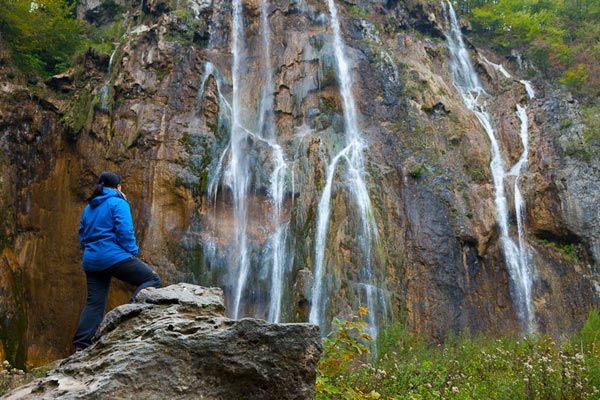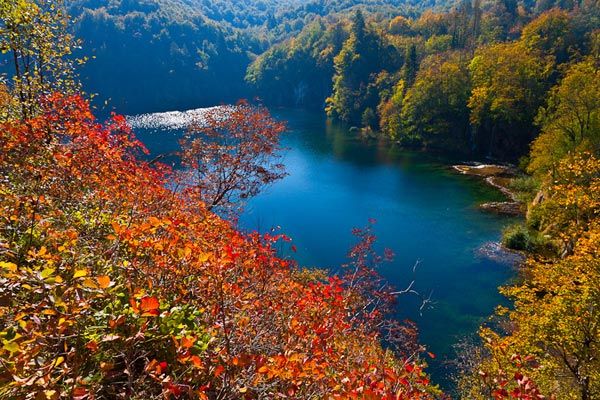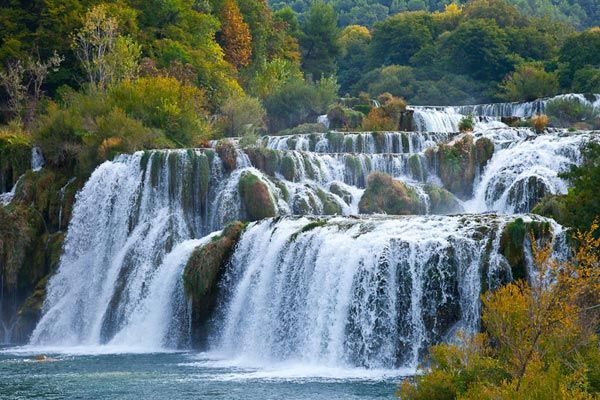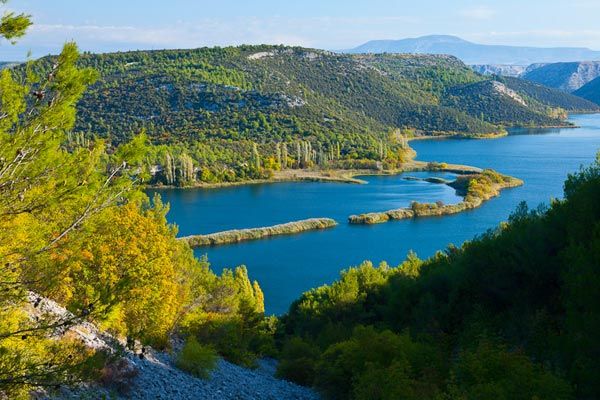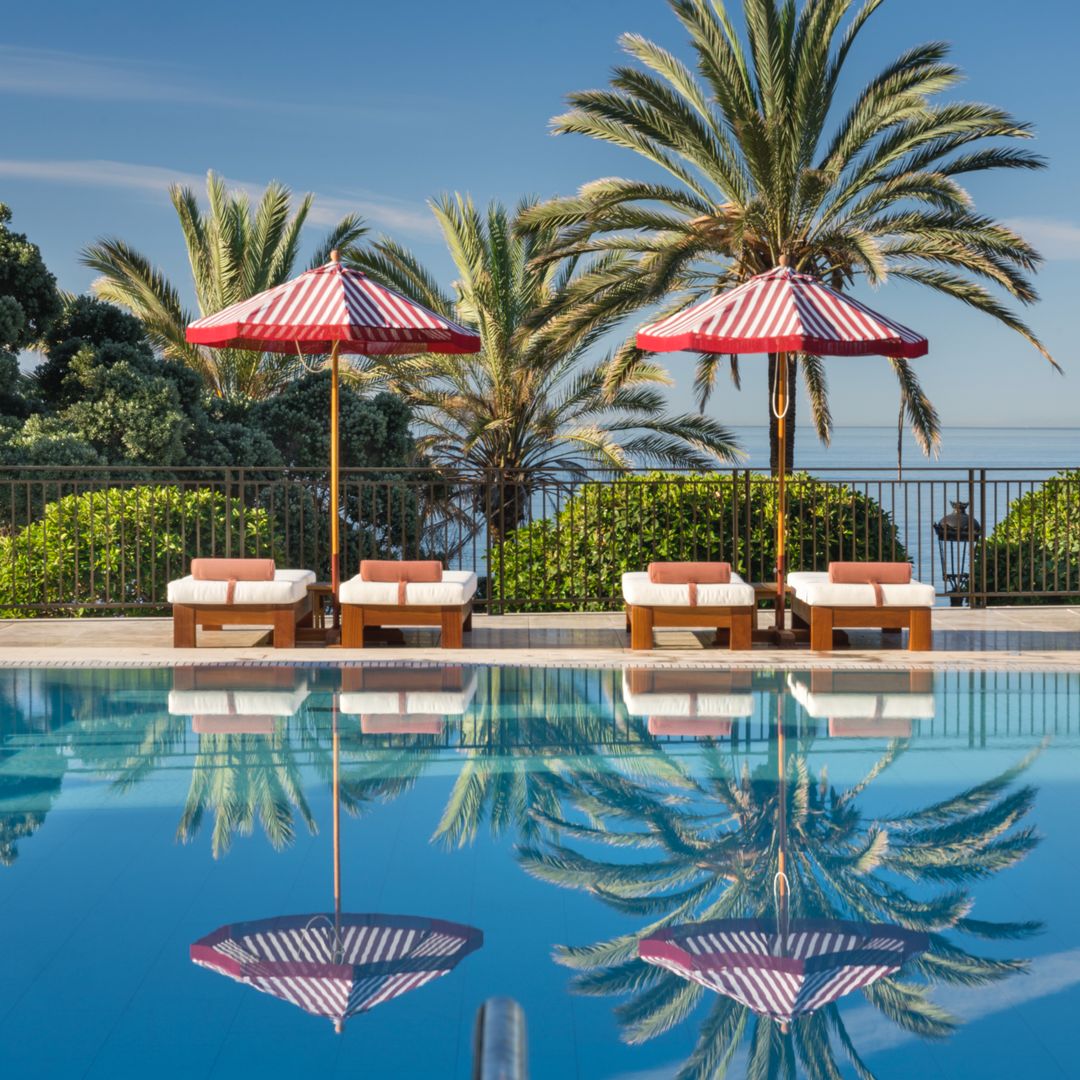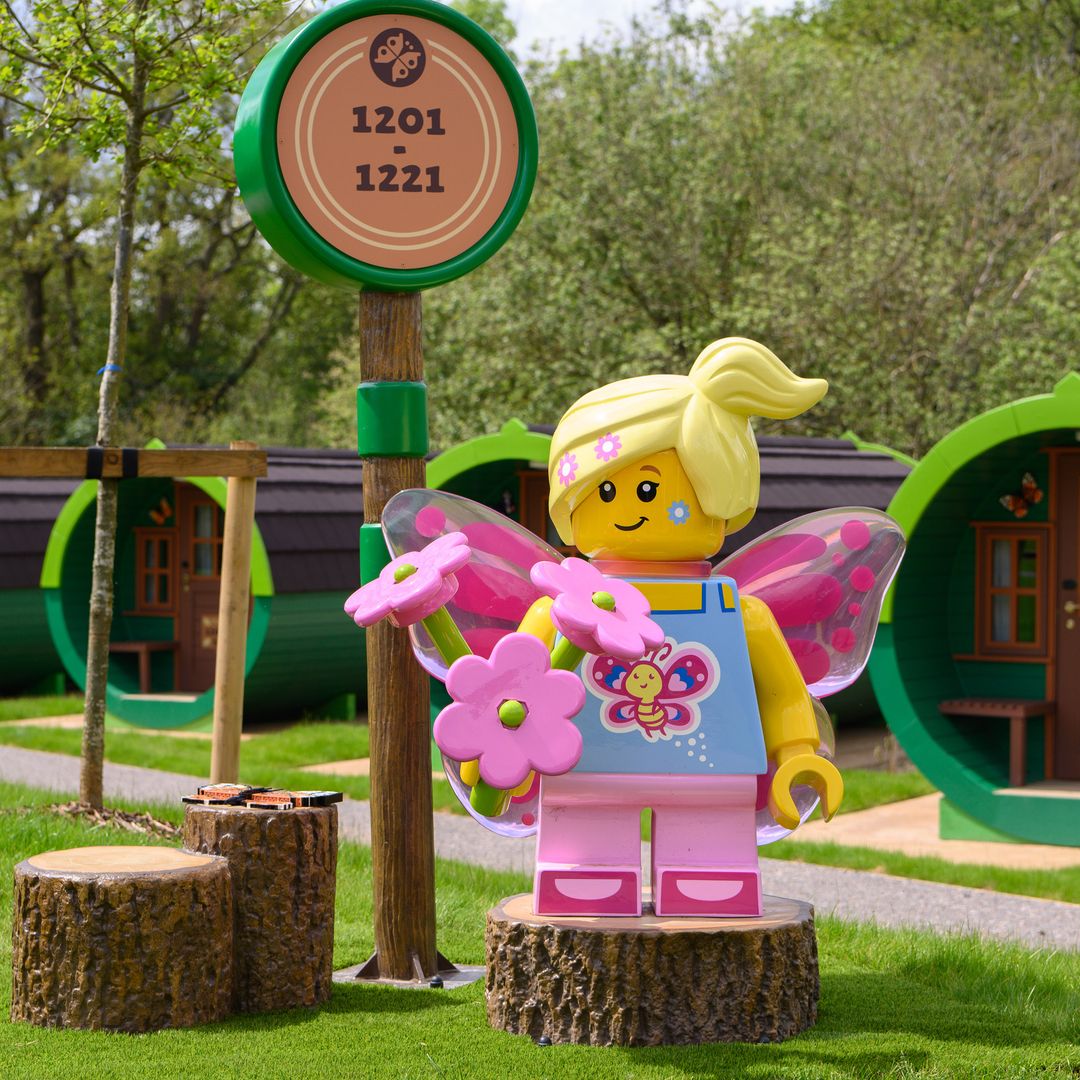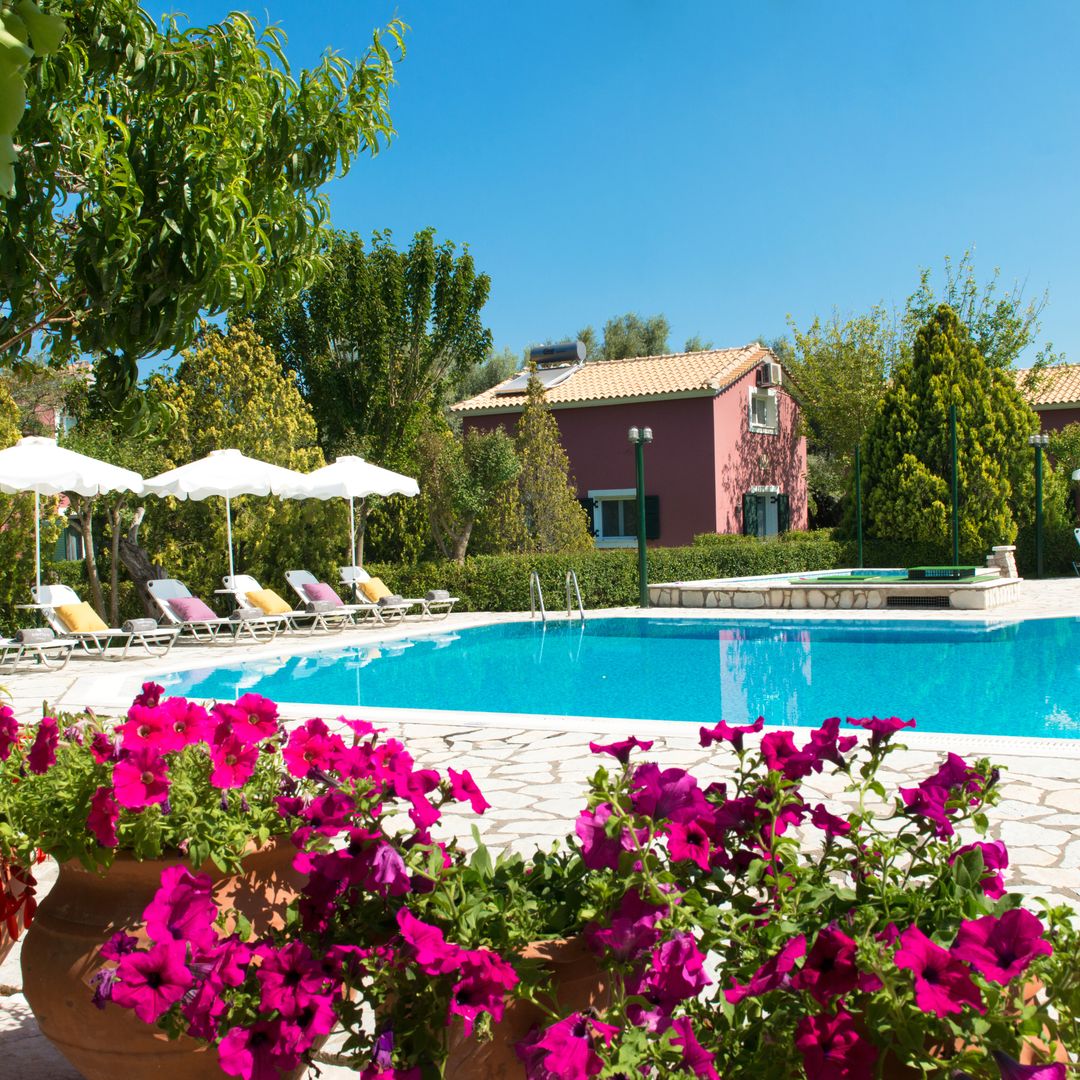There's no doubting the attractions of Croatia's Adriatic coastline, but inland lies a more private landscape waiting to be explored. Here nature reaches epic proportions in a wild secret interior that is home to some of the most spectacular natural gems of Europe.
The first of these is the string of sixteen Plitvice Lakes, that lies like a jewelled necklace near the border with Bosnia-Herzegovina. The vivid colour of the waters is due to the abundance of minerals in the limestone terrain over which the Korana River runs as it links the lakes in a series of cascades. Each unique waterfall creates a fantasy filigree of strands of water as it tumbles between the small pools among terraced rocks that are constantly eroding and reshaping the natural barriers to flow.
Wooden walkways over the lagoons take visitors to the very edge of the thundering water, while trails lead off and around the lakes, inviting you to explore each and every corner of the park in search of the most stunning play of light as it glints from a stream or dances on the surface of a lake, or the most impressive refection of the vast forest that surrounds you. Every summer, thousands of visitors tread the forest trails, often boarding one of the in-park buses or boats to break the journey. Ancient beeches and dark firs and spruce provide a leafy hideout for the area's most exclusive inhabitants: brown bears, wolves and otters. This, Croatia's oldest national park, is a UNESCO World Heritage Site and the country's proudest natural boast.
With eyes following the karst landscape, heading towards the southern lands of Dalmatia, you'll find a Mediterranean ambience. Here, alongside the Adriatic coast, near the historic town of Sibenik, lies the Krka National Park. Again, the dissolving limestone is the basis of the intricate landscape carved by the river that gives its name to the park, and, again, it is a landscape where water takes centre stage. Here, the headline act is the spectacular Skradinski waterfall, where carefully placed lookout points ensure you don't miss a single angle of the amazing spectacle.
Another of the park's attractions is Visovac island, which rises in the middle of Visovac lake, crowned by a Franciscan monastery. A tour of the church and the fine treasures housed in its museum gives an insight into the Mediterranean farming culture of the area and the importance of the site to man since prehistoric times.
The role of water in the region is emphasised by the buildings alongside the Skradinski waterfall, refurbished watermills dating from the nineteenth century that ground cereals and grains between great wheels driven by the force of the current. Even more impressive, though, are the ruins of the Miljacka hydroelectric plant, which, in the early twentieth century, was Europe's most powerful hydroelectric plant and the first established in Eastern Europe, making it a unique monument to the continent's industrial heritage. This engineering marvel was designed by the legendary Nikola Tesla and started operating in August 1895, just days after the tremendous power plant built half way across the world alongside the Niagara Falls, also using Tesla's design.
Still within sight of the Adriatic shore lies Velebit, the largest mountain range in Croatia. In the southern part, the Paklenica National Park is a dream for climbers and mountaineers, not least, due to the two deep canyons, Velika Paklenica and Mala Paklenica, whose dizzying vertical cliffs rise high above the water thundering through the narrow channel below and attract and challenge the best climbers in the world. High above, in their mountaintop domain, vultures and eagles fly over the old pastures and summer cabins of the villagers from the Adriatic coast.
The toughest side of the Velebit mountains lies to the north and is home to Sverjerni Velebit National Park. The most recent of the country's protected natural areas, Sverjerni Velebit is a convoluted maze of rock hemmed in by dense beech and fir forest inhabited by brown bears. The peaks are a limestone labyrinth, exposed to the mercy of the snow and the temperamental Bora wind that descends with unstoppable force, making the temperatures plunge. The rocks absorb all available water like sponges and the result is an extreme and near-desert habitat with little wildlife. But these unique heights offer unparalleled views of the Adriatic Sea and the islands that dot the bright waters off the Croatian coast.
No less impressive is the Risnjak National Park on the border with Slovenia. Here, in the shadow of the mountain for which the park is named, the Kupa River rises from a great underground spring and gushes forth to form a lake of stunning natural beauty and jewel-bright waters, and in the dense forests of the area bears, wolves and lynxes roam free.
THE PRACTICALITIES
Where to stay There are four hotels at the access points to the Plitvice National Park (Jezero, Plitvice, Bellevue and Grabovac), although only two remain open year round. There are also two camping areas with bungalows. Pleasant rural lodgings are available in the village of Korana. Sibenik, on the shores of the Adriatic, is home to the Jadran hotel, an ideal base for visiting the Krka National Park. In the village of Krasno, where the Svejerni Velebit National Park visitor centre is located, you'll find the Jure hostel. The Risnjak hostel is a perfect base to exploring the National Park of the same name.
Learn more: Croatian National Tourist Board

